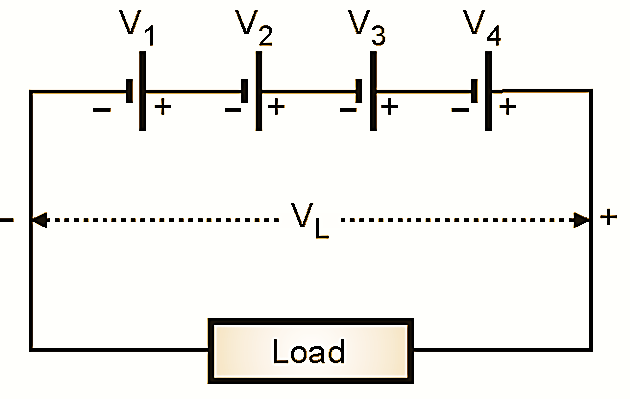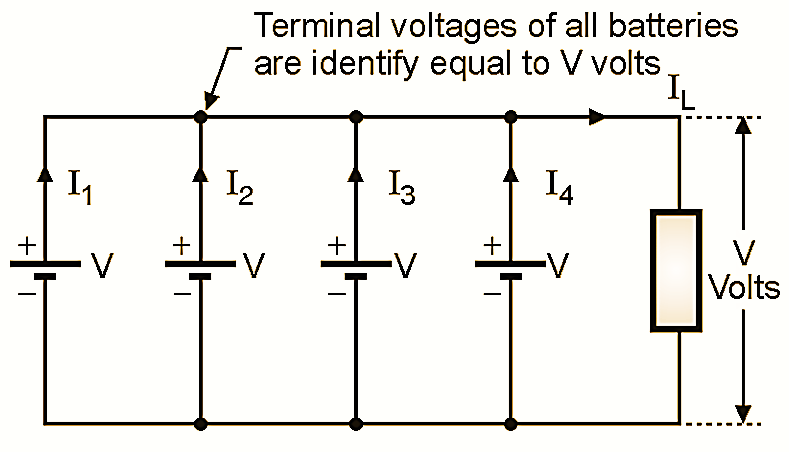The batteries are available with some specific terminal voltages. e.g. 1.5V, 6 V, 12 V, 24 V, 48 V etc. If we want to have some terminal voltage other than these standard ones, then series or parallel combination of the batteries should be done. One more reason for connecting the batteries in series or parallel is to increase the terminal voltage and current sourcing capacity respectively.

Series Connection of Batteries
Connection diagram :

The series connection of batteries is shown in Fig. 1(a). N number of identical batteries with terminal voltage of V volts and current capacity of I ampere each are connected in series. The load is connected directly across the series combination of N batteries as shown in Fig. 1(a). The load voltage is given by,
\[{{V}_{L}}=(V+V+……+V)\text{ }…..\text{N terms}\]
\[{{V}_{L}}=NV\text{ Volts}\]
However the series connection does not improve the current sourcing capacity. The current sourcing capacity of the series string is same as that of a single battery connected in the string, i.e. I amperes.

Figure 2. Series connection of batteries with different terminal.
It is not always necessary to connect all the batteries of same terminal voltages in series with each other. The batteries of different terminal voltages can be connected in series as shown in Fig. 2.
\[{{V}_{L}}={{V}_{1}}+{{V}_{2}}+{{V}_{3}}+{{V}_{4}}\]
Parallel Connection of Batteries
Connection diagram :

Figure 3.
The parallel connection of batteries is shown in Fig. 3. Batteries are connected in parallel in order to increase the current supplying capacity. If the load current is higher than the current rating of individual batteries, then the parallel connection of batteries is used. The terminal voltage of all the batteries connected in parallel must be the same. The load current is equal to the sum of currents drawn from the individual batteries.
\[{{I}_{L}}={{I}_{1}}+{{I}_{2}}+{{I}_{3}}+{{I}_{4}}\]
If all the batteries are of same current rating then they supply equal amount of current. But, if they are of different current ratings, then they share current in proportion with their current ratings.